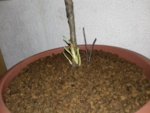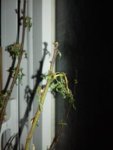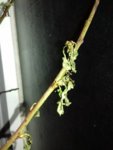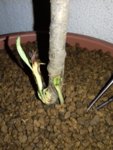MiguelMC
Yamadori
Greetings nutters (that didn't sound quite right)
A friend of mine, in celebration of our friendship and knowing my love for trees, gifted me a almond tree now the problem is that this person in question knows absolutely nothing about horticulture or bonsai and even though the intentions were all in the right place, I'm afraid she gave me a dying tree.
I have zero experience with Prunus and from what I've gathered these trees can be quite finicky, I would love someone with more experience to give me some pointers on first keep it alive and maybe turn it into a beautiful in la few years.
the tree is about 1.2m high 3ft if my conversions are right (its been a while since I used the imperial system)
it looks quite dehydrated the leaves are not dry but shriveled quite a lot.
it has some green sprouts near the base that look quite weird.
were are in early spring here so i don't think its possible to do a trunk reductions without fully killing it.
like always any comment is appreciated
A friend of mine, in celebration of our friendship and knowing my love for trees, gifted me a almond tree now the problem is that this person in question knows absolutely nothing about horticulture or bonsai and even though the intentions were all in the right place, I'm afraid she gave me a dying tree.
I have zero experience with Prunus and from what I've gathered these trees can be quite finicky, I would love someone with more experience to give me some pointers on first keep it alive and maybe turn it into a beautiful in la few years.
the tree is about 1.2m high 3ft if my conversions are right (its been a while since I used the imperial system)
it looks quite dehydrated the leaves are not dry but shriveled quite a lot.
it has some green sprouts near the base that look quite weird.
were are in early spring here so i don't think its possible to do a trunk reductions without fully killing it.
like always any comment is appreciated




